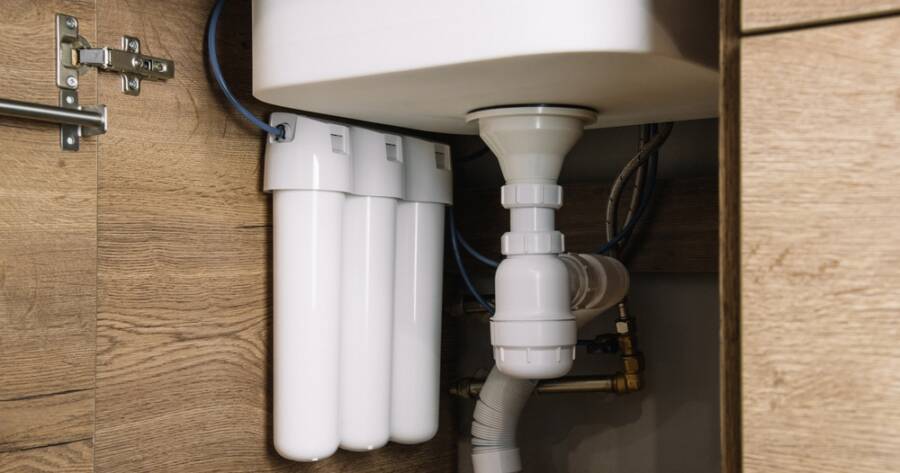Many households across the United States rely on tap water that’s technically safe to drink but doesn’t always taste—or smell—as fresh as it should. Even treated municipal water can contain chlorine, sediment, or traces of minerals that affect flavor and quality. The right water filtration system can remove those impurities, giving you cleaner, better-tasting water straight from the tap. From simple pitchers to advanced under-sink filters, understand the water filtration systems that truly make a difference.
Why Water Filtration Matters
Tap water goes through extensive treatment before it reaches your home, but along the way, it can pick up substances that alter its purity. Common concerns include chlorine used for disinfection, traces of lead from older pipes, and natural minerals such as calcium or magnesium that create hard water. While most of these aren’t harmful in small amounts, they can impact taste, odor, and clarity.
A good filtration system targets these unwanted elements while keeping beneficial minerals intact. The result isn’t just better flavor—it’s water that supports healthier cooking, cleaner ice, and longer-lasting appliances. Filtration also helps families feel more confident about the quality of their drinking water, especially in areas where aging infrastructure or local contamination issues exist.
Pitcher and Faucet-Mounted Filters: Easy and Affordable Options
For smaller households or renters, pitcher and faucet-mounted filters are the simplest way to improve water taste quickly. Pitcher filters use activated carbon to remove chlorine, sediment, and certain heavy metals. They’re portable, require no installation, and can be stored in the refrigerator for chilled, clean water on demand.
Faucet-mounted filters attach directly to your kitchen tap and filter water as it flows. They typically use a combination of carbon and microfiltration to remove odors and particles. The main advantage is convenience—you get filtered water instantly without filling and waiting for a pitcher. Both types are great entry-level solutions, though they may need filter replacements more frequently than larger systems.
Under-Sink Filters: Clean Water at the Source
Under-sink filtration systems offer more power and capacity for families who use filtered water daily for drinking and cooking. These systems are installed directly into the plumbing under your kitchen sink, delivering purified water through a separate faucet or the main tap.
Most under-sink filters use multi-stage filtration, which can include sediment filters, carbon blocks, and in some cases, membrane filters that capture smaller contaminants. Because of their design, they don’t take up counter space and can process large volumes of water before needing maintenance. For households that want consistent, great-tasting water without daily refills, an under-sink system is a practical long-term solution.
Reverse Osmosis Systems: Maximum Purity for Picky Drinkers
For those who want the highest level of filtration available for home use, reverse osmosis (RO) systems are hard to beat. These systems push water through a semipermeable membrane that removes up to 99% of common contaminants, including lead, nitrates, fluoride, and microplastics.
While RO systems deliver extremely pure water, they also tend to remove minerals that contribute to natural taste. Some modern models include a remineralization stage that adds calcium and magnesium back into the water, restoring a clean but balanced flavor. They do waste a small amount of water during filtration, but their performance and reliability make them a top choice for people who are especially sensitive to taste or concerned about contaminants.
Whole-House Systems: Complete Protection for Every Tap
If you want to filter water throughout your home—not just at the kitchen sink—a whole-house system offers comprehensive coverage. These systems are installed where the main water line enters your home, ensuring that every faucet, shower, and appliance benefits from cleaner water.
Whole-house filters are especially useful in areas with hard water or sediment buildup. By filtering out minerals and particles before they enter your pipes, they help prevent scale, extend appliance life, and improve the feel of shower water on your skin and hair. While installation is more involved, these systems deliver noticeable improvements in both water quality and home maintenance.
Maintenance and Filter Replacement
Even the best filtration system won’t perform well if it’s neglected. Every type of filter—whether a simple pitcher cartridge or a complex RO membrane—has a lifespan based on the amount of water it processes. Replacing filters on schedule ensures your system continues working effectively and prevents bacteria buildup.
To make maintenance easier, many modern systems include indicator lights or digital reminders that track usage. It’s also wise to clean any storage tanks or filter housings periodically to prevent mineral deposits or residue from forming over time.
Choosing the Right System for Your Needs
Selecting the best water filtration system comes down to your household’s specific water quality, usage habits, and space. Start by identifying what’s in your water through a local water quality report or at-home test kit. If your water has a strong chlorine taste, a carbon-based filter may be enough. If you’re dealing with well water or older plumbing, a more advanced system with multiple filtration stages might be necessary.
Whatever system you choose, look for certifications from organizations like NSF International or the Water Quality Association, which verify that the product meets performance and safety standards.
Cleaner Water, Better Living
Clean water doesn’t just quench your thirst—it improves your health, cooking, and even peace of mind. With so many effective filtration systems available, every household can find a solution that fits its needs and space.
Whether you prefer a simple pitcher, a powerful reverse osmosis setup, or a whole-house filter, investing in clean tap water pays off in taste, safety, and comfort. Once you make the switch, you’ll notice the difference with every glass.

